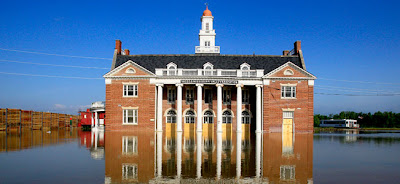The sea level
on a stretch of the US Atlantic coast that features the cities of New
York, Norfolk and Boston is rising up to four times faster than the
global average, a report said Sunday. This increases the flood risk for
one of the world's most densely-populated coastal areas and threatens
wetland habitats, said a study reported in the journal Nature Climate Change. Since about 1990, the sea level
along the 1,000-kilometre (620-mile) "hotspot" zone has risen by two to
3.7 millimetres (0.08 to 0.15 inches) per year. The global rise over the same period was between 0.6 and one millimetre per year, said the study by the US Geological Survey (USGS).
If global temperatures
continue to rise, the sea level on this portion of the coast by 2100
could rise up to 30 centimetres over and above the one-metre global
surge projected by scientists, it added. The localised acceleration is thought to be caused by a disruption of Atlantic current circulation. The hotspot stretches from Cape Hatteras, Northern Carolina to north of
Boston, Massachusetts and also includes other big cities like
Philadelphia and Baltimore. Another study has shown a one-metre sea level rise to increase New
York's severe flooding risk from one incident every century to one every
three years. It might be a good idea to move inland from the coast. I would also advise more of my readers to keep an close eye on the climate over the remainder of the year. AFP / MadOne






























